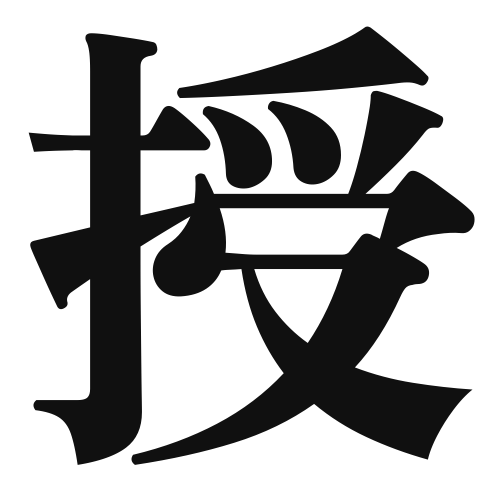1. Overview of Meaning
The kanji 授 (ju) primarily means “to give,” “to grant,” or “to teach.” It is often associated with the act of providing knowledge or skills to others.
2. Formation and Radical
Formation of the Kanji: The kanji 授 is a phonetic-ideographic character (形声文字). It combines the meaning of “to give” with a phonetic component that suggests its pronunciation.
Radical: The radical for 授 is 手 (te), which means “hand.” This radical indicates actions performed by hand, such as giving or teaching.
3. Examples of Usage
Common Words and Phrases: Some frequently used words that include 授 are:
- 授業 (jugyō) – “class” or “lesson”
- 授与 (juyo) – “granting” or “bestowal”
Example Sentences in Daily Conversation:
- 先生は私たちに新しい知識を授けてくれました。
- The teacher gave us new knowledge.
4. Synonyms and Antonyms
Similar Kanji: A kanji with a similar meaning is 与 (yo), which also means “to give.” However, 与 is often used in more formal contexts or in phrases related to giving something abstract, like permission.
Antonyms: A kanji with an opposite meaning is 奪 (datsu), which means “to take away” or “to seize.”
5. Cultural and Historical Background
Relation to Japanese Culture: The concept of 授 is deeply embedded in Japanese culture, particularly in the context of education and mentorship. The act of teaching is highly valued, and the kanji reflects this cultural significance.
Proverbs and Idioms: One common saying is 授けられた知恵 (sazukerareta chie), which means “wisdom that has been imparted,” emphasizing the importance of learning from others.
